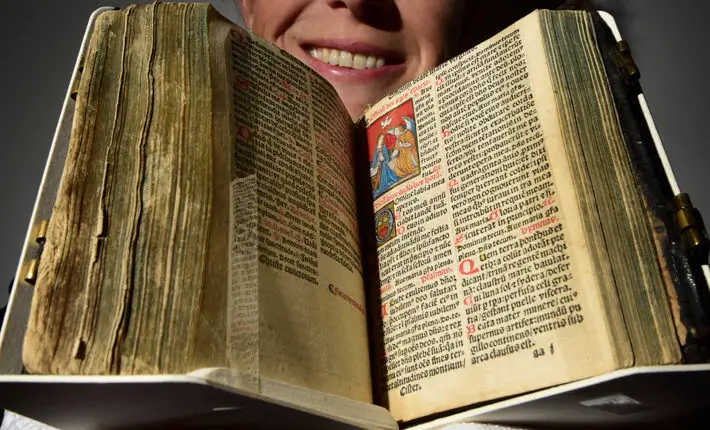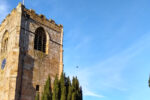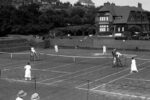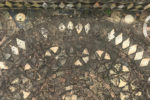The Breviary at Rievaulx Abbey

At Rievaulx Abbey there is a small 500-year-old prayer book. Recently rediscovered by an English Heritage historian, it is a unique survival. The book is especially important because of its sumptuous painted illuminations, which include a splendid coat of arms – vital evidence that allows its earliest owner to be identified.
The volume is a special type of service book called a breviary, and contains the text for the Divine Office or Opus Dei (work of God), the eight services which monks sang daily in the monastic church. Each monastic order had their own version of the breviary, and this book contains the services recited by the austere Cistercian Order, to which Rievaulx belonged. However, as will be explained, the book does not originate from this abbey.
“Miniature images of saints”
On almost every page are decorated initials, intricately painted in gold and bright colours. Several of its leaves are also adorned with miniature images of saints. These include a depiction of the Annunciation to the Virgin, the moment when the Angel Gabriel came to the Virgin and told her she would miraculously conceive Christ. Despite looking like an illuminated manuscript, the book is in fact printed.
Until the mid 15th century, all books were laboriously copied by hand. This was changed by the invention of printing. From the outset, monasteries were great consumers of printed books, and it was not uncommon for especially prized copies to be decorated so as to resemble illuminated manuscripts.
The title page and colophon (publishing information) on the final page provide information about the place and date of the books printing. This happened on 1 June 1527 at the premises of Jean Kerbriand on the rue St-Jacques in Paris, then the centre of the European book trade. Publication of the book was financed by several booksellers and was to be sold at their shops in Paris, each identified by its own sign: the golden lily, the pelican, the silver lion and the iron basket.
“Impressive Renaissance illuminations”
English Heritage historian, Dr Michael Carter, an expert on monasticism at the end of the Middle Ages, spotted the book when it came up for sale at auction in 2016. His research showed that scholars of early printing were unaware of the edition to which this book belonged and that it is not listed in any reference works, nor are there copies in any libraries. The volume currently on display at Rievaulx is therefore an apparently unique survival.
Dr Carter’s research also provided interesting information about the book’s provenance. Painted on the title page are impressive Renaissance illuminations. These include a shield with a coat of arms: a white background with a red cross; at the top of the shield is a crosier, a ceremonial staff carried by an abbot. After exhaustive research, Carter was able to identify these as the coat of arms of Morimond in France, one of the oldest and most important abbeys in the Cistercian Order. The lavishness of the illuminations suggests that that the breviary was used by a very senior monk, possibly even an abbot.
For more info on Rievaulx Abbey visit english-heritage.org.uk/rievaulx-abbey











